Vintage 1950s Silverware, Blossom Time: Lead-free! Vintage (but not antique!) sterling silver is generally a safe choice.
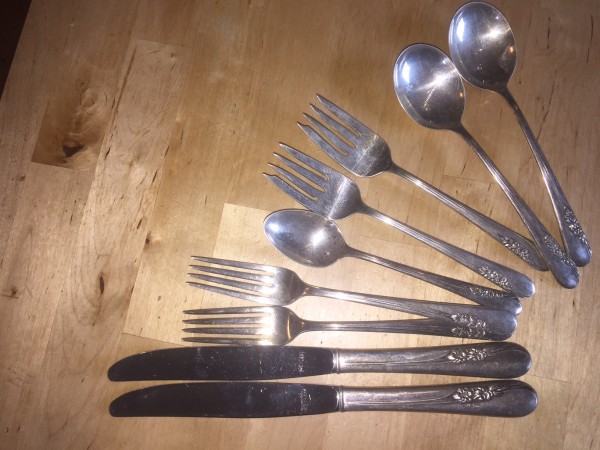 Originally written: March 28, 2017
Originally written: March 28, 2017
Updated: March 3, 2020
A little personal story about the silverware pictured here.
My husband’s mother died of a very aggressive form of lung cancer when he was just 18 years old (c. 1976.). As a result, I never met my mother-in-law – and my children never had her as a grandma.
Somehow, with all that has happened to our little family in the past 16 years [April 7th will be the 16-year anniversary of my first date with my husband (our first-date was a Passover Seder we attended together!)], we have held on to the silverware that Len inherited from his mother when she passed away. It’s the only thing we have of hers, besides an old diary that got water-damaged in our house fire back in 2002. This silverware is one of the few things from our past that miraculously somehow survived the fire undamaged — as it was tucked away – wrapped in linen towels in a hardy little suitcase, in a still-unpacked box, in a closet, in the corner of the least-burnt-to-a-crisp room – that was farthest from the fire source!
My late mother-in-law received this silverware as a wedding present from her sister. She was born in 1930, and we’re pretty sure Esther (Evie) and Mordecai were married in 1956 — so this silverware is likely from 1956. This is consistent with the issue date (found on many online antiquing sites) for this pattern [Blossom Time by International Silver] – of 1950 (with the production date range showing as “1950 to 1959”.). [It was a very popular pattern and is easy to find online.]
With our own personal story around this vintage silverware – I completely understand the sentimental value people place on these types of items. I still do think sentimentality should be reevaluated whenever possible — considering science, and the potential for many types of “sentimental family heirlooms” to poison your family).
This is our everyday silverware!
We use this silverware as our “every day flatware” — so that we have a reminder of my mother-in-law, and a reminder of our family and everything we have been through and survived together over the years [it’s just mixed in with our Ikea and Williams Sonoma stainless steel pieces in the silverware drawer!]
When I tested it with an XRF it was about 940,000 ppm silver. It is Sterling Silver, and – as all Sterling should be – it is stamped “Sterling”, (specifically “International Sterling”) on the back.
Sterling – both jewelry, flatware or other household items – will either be stamped “Sterling” or “925” on the back. [If it is not stamped with either of those marks it is likely not solid Silver – but possibly silver-plated; Silver-plated flatware will likely have a yellowish tinge to it (compared to true Sterling) and it may also have parts where the plating is more worn than others, so some levels of discoloration.
Sterling flatware pieces are generally all-Sterling – with the one exception being knives. Knives (other than actual butter knives) are likely to have Stainless Steel blades and Sterling Silver handles – and you can see the seam / differentiation in the metal where the blade is attached to the handle.
“925 Silver” (Sterling Silver) means it is 925,000 parts per million Silver (92.5%). Much of the 925 Silver I have tested has actually been even higher Silver content than that (usually 940,000 – 960,000 ppm Silver or in that range), so my understanding is the 92.5% is likely a minimum standard in the Silver industry, where it is expected to be at least 92.5% Silver. The other 7.5% is generally Copper, however it can be a mix of other metals.
Is Lead often found in items marked “Sterling”?
In my experience so far (with the many, many Silver items I have tested over the years), those other metals (in 925-stamped Silver or Silver marked “Sterling”) never include Lead – unless the item was made before 1930.
Some basic definitions for context:
- “Antique” is generally defined as follows: “The rule of thumb used by most antique dealers is that anything about 100 years or older is an antique. Items that are old, but not quite that old, are called vintage.” (Quote from Mental Floss)
- “Vintage” is generally defined as follows: “It is an object that represents a previous era or time period in human society. An item should be at least 100 years old to be defined as an antique. Generally speaking if the item is no older than an antique but not less than 20 years, it falls under the term vintage.” (Quote from Retro Kids.)
I try to stick with these definitions when using the words “Antique” and “Vintage” here on this website! Note: Truly antique Silver that I have tested (mostly from the late-1800s and earlier) has tested as low as 800,000 ppm silver (or 80% Silver), and those items often may have Lead.
Why is there Lead contamination in some antique silver items?
Based on my limited knowledge of the history of Silver making (from some books I read in my history classes in high school!), with antique cast Silver items, the initial designs and casting were often done in Lead—since it was soft to sculpt and cheap to work with for a design medium; so this may have left some Lead in the casting mold – and then (I imagine) the Lead from the original sculpted design may contaminate the Silver. [This is my theory as to why some of the older Silver has Lead at unsafe levels.]
 Tamara, what types of antique silver items have you found that have tested positive for Lead?
Tamara, what types of antique silver items have you found that have tested positive for Lead?
The main objects that have been particularly concerning for me – in terms of lead contamination often found in functional food use antique silver items (usually made between the late 1800s – or earlier – to about 1930) are antique:
- baby spoons,
- baby cups,
- baby rattles (& teethers)
These antique items (handed down through generations and intended for use by children) may be marked or sold as silver (and even marked with the “Sterling” mark.) Antique items are not generally marked with the “925” mark, as it was not implemented as a widely used standard until 1973: “In 1973, the European Community (EC) agreed to recognize 925/1000 as the official sterling silver standard and 925 as the official standard mark” – link.). Therefore any silver not marked “925” (where you are unsure of the year of manufacture) may have trace lead at levels that are considered unsafe for children by modern standards.
How much Lead is too much Lead?
How much Lead do these antique silver items have?
The amount of Lead that is considered unsafe (and illegal) in newly manufactured items (made today) and intended for use by children is anything 90 ppm Lead (or higher) in the paint, glaze or coating and anything 100 ppm Lead (or higher) in the substrate (the base metal) In the case of unpainted, undecorated (no enamel or other coating) silver items, the “100 ppm” threshold would be the applicable standard.
I have tested many antique silver rattles and baby spoons that were positive for lead in the 800 to 2000 ppm range. Many of the antique baby cups I have tested actually have solid Lead solder joins (holding the handle on to the body of the cup.) Here’s a post about an antique (c. 1895) sterling silver baby spoon that I tested with Lead contamination.
With the above understanding – in general I always say that Sterling silver (true sterling, marked as such – even including vintage – 1930s, 1940s & 1950s Sterling, but not including antique sterling pieces) is a safe choice for my family and yours. It’s the one vintage item we use in our home on a daily basis and are comfortable using!
As always, please let me know if you have any questions. Thank you for reading and for sharing my posts.
Sincerely,
Tamara Rubin
#LeadSafeMama
If you appreciate my advocacy work, please consider making a contribution on my GoFundMe,
so I can keep testing things for families around the country!
Never Miss an Important Article Again!
Join our Email List


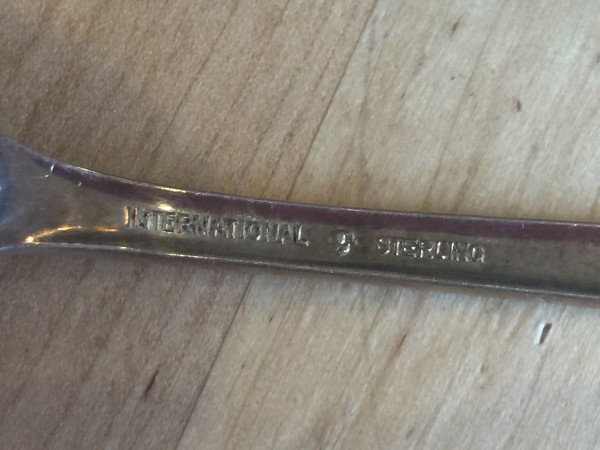
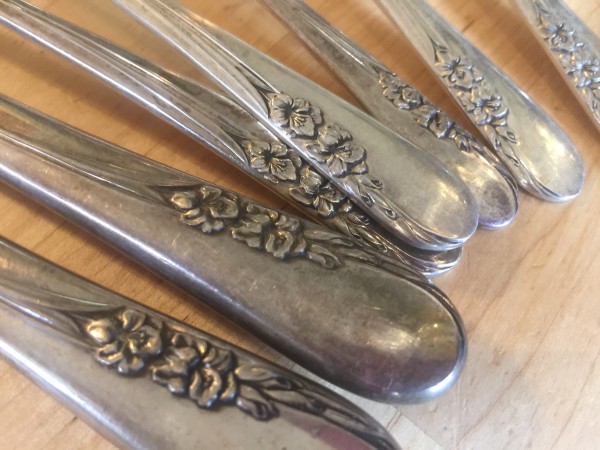
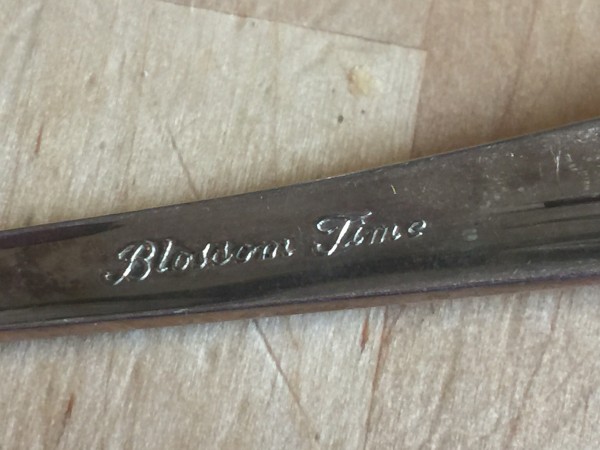
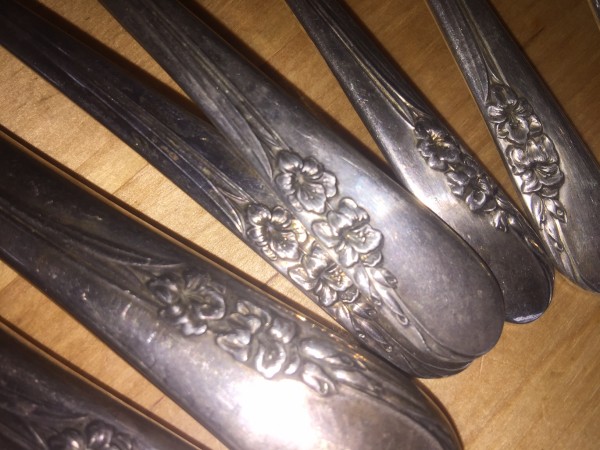

Thank you for this lovely read. Do you happen to know if Bakelite flatware was ever known to contain lead?
Hi, so Sterling silver flatware is safe to use? What if slightly tarnished between polishings? Thanks so much!!
I also wonder if you have an opinion about the lead safety of silver-plated flatware (for example the popular: William Rogers International Silver)?
I’m interested in knowing if silver-plated flatware (circa 1950) would be safe.
I’m curious how lead-safe both vintage and antique *silverplate* items are. I’m particularly curious about late Victorian items and those from the 1930s and 1940s, particularly made by any Rogers entity (manufactured by International Silver).
Hi there – I will see if I can do some posts about that… I’ll add it to my to do list (but it may be a while – it’s a very long list at this point!)
My readers direct the things I test by sending me things for testing. I am sorry but I am not accepting new items for testing at this time, but if you subscribe to my newsletter (it’s free) you will be among the first to know when I start testing things again.
Tamara
Tamara
So, am I understanding this right….. unless it was made pre1930 all silverware doesn’t have lead? Even if it isn’t marked silver? Most of my silverware isn’t mark with any writing on it. Thank you:)
That’s not exactly correct – will respond with more detail a.s.a.p.
Thank you— I’m very curious about silver-plated flatware. I’ve collected a lot from thrift stores and use it exclusively. Am I exposing my family to lead?
Same here. I just started questioning heavy metal content when looking at a Victorian item (1891) that had lost quite a bit of plating.
I have a set of WM Rogers & Son “silver plated” silver ware as well, we use it daily. As the multiple previous inquiries above me asked, have there been any finding regarding silver plating from this specific company, i believe my set is from 1941, gardenia pattern. This week I have replaced 90% of my kitchen with lead free items. This is truly the last thing I need confirmation on. Thanks for all you do.
I am also curious about silver-plated vintage cutlery. I recently picked up a set of Nobility – Wind Song 1950s silver plated cutlery at a thrift shop and a few of the fork tongs are worn and dark at the ends. I noticed a metallic taste when eating from these forks. Should I get rid of them? What about the lesser used cutlery that is not worn like the pretty butter spreaders and long beverage spoons which I would use occasionally?
Hi Tamara, I’m also wondering about vintage silver-plated flatware! I have a Harmony House set from 1937. Thanks!
I would not use that unless you can get it independently tested.